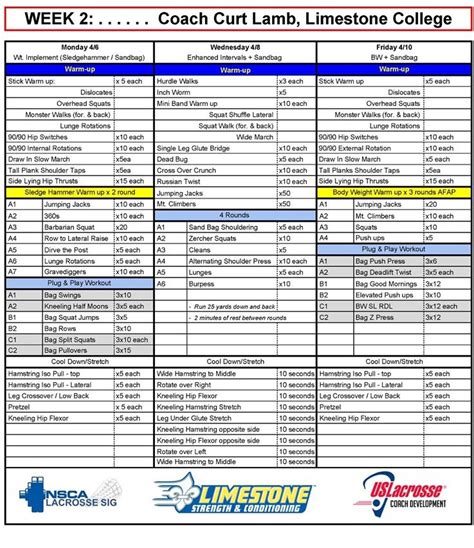Discover how to create a balanced lacrosse practice schedule, maximize drill effectiveness, incorporate conditioning, and evaluate results for optimal team performance.### Tips For Building A Balanced Lacrosse Practice Schedule
Creating a well-structured lacrosse practice schedule is essential for developing a successful team and honing individual skills. A balanced approach ensures that players not only refine their technical abilities but also build the physical stamina needed for peak performance on the field. Understanding the significance of this balance can transform your practice sessions into highly productive experiences. In this article, we will explore practical tips and strategies for structuring effective drills, incorporating conditioning, and balancing skill development with team strategies. Whether you’re a coach or a player seeking to enhance your training regimen, these insights will help you evaluate and adjust your practice schedule for optimal results. Let’s dive in and discover how to maximize your lacrosse practice time!
Understanding The Importance Of A Balanced Lacrosse Practice Schedule
Establishing a balanced lacrosse practice schedule is crucial for developing both individual players and the team as a whole. A well-structured practice not only enhances skills but also fosters teamwork and strategic thinking, essential components that contribute to a successful season. Here are several reasons why maintaining a balanced schedule is important:
- Consistency: A balanced schedule helps players and coaches develop a routine, which can lead to improved performance over time.
- Skill Mastery: Allocating time for different drills ensures that players can focus on mastering various skills, from shooting to defensive tactics.
- Team Cohesion: Regular practice sessions that include both skill development and team strategies encourage bonding among players, promoting communication and trust on the field.
- Conditioning: Incorporating conditioning elements into practice can enhance stamina and reduce injury risks, ensuring players can maintain high performance levels throughout games.
- Adaptability: A balanced schedule allows for flexibility. Coaches can adjust practices based on the team’s needs and performance evaluations, fostering an environment of continuous improvement.
By understanding and implementing a balanced lacrosse practice schedule, coaches can effectively guide their teams toward achieving both personal and collective goals. This approach not only prepares players for competition but also cultivates a love for the game, ensuring they remain engaged and motivated throughout the season.
Tips For Structuring Effective Drills To Maximize Practice Time
To enhance your team’s performance through a well-structured practice schedule, consider the following Tips For organizing drills effectively:
| Tip | Description |
|---|---|
| 1. Define Clear Objectives | Before each practice, identify the specific skills or strategies you want to improve. This clarity helps focus drills and makes practice time more productive. |
| 2. Use Progressive Drills | Structure drills to build on each other. Start with basic skills and gradually introduce complexity, allowing players to master foundational techniques before moving on. |
| 3. Incorporate Game-Like Scenarios | Design drills that mimic actual game situations. This helps players apply skills under realistic conditions, enhancing their decision-making abilities during matches. |
| 4. Break Into Smaller Groups | Segment players into smaller groups to ensure that everyone receives adequate attention and can practice skills at their own pace. |
| 5. Time Management | Limit the time spent on each drill to maintain high energy levels and engagement. Use a timer to keep everyone focused and maximize actual practice time. |
| 6. Use Feedback Loops | Encourage an ongoing dialogue between players and coaches during drills. Constructive feedback helps players understand what they’re doing well and where they can improve. |
| 7. Evaluate and Adjust | After each practice, take a moment to reflect on what drills worked and which didn’t. Use this insight to continuously improve your practice schedule. |
By following these Tips For structuring effective drills, you’ll create a practice environment that maximizes the potential of each player, leading to overall team improvement. Remember, the key is to remain adaptable and responsive to the team’s needs throughout the season.
Incorporating Conditioning For Improved Performance In Lacrosse
Conditioning is a critical component in ensuring that lacrosse players perform at their peak levels throughout every game and practice. To effectively incorporate conditioning into your practice schedule, consider the following tips for optimizing player performance while minimizing fatigue:
- Interval Training: Utilize high-intensity interval training (HIIT) that mimics the stop-and-go nature of lacrosse. This can include sprints followed by periods of rest or walking, helping players build both speed and endurance.
- Sport-Specific Drills: Integrate conditioning within skill drills. For example, incorporate timed sprints during passing or shooting drills. This not only boosts fitness levels but also reinforces essential lacrosse skills under fatigue.
- Endurance Sessions: Dedicate specific practice sessions to longer runs or agility drills. Focus on building cardiovascular endurance with longer, sustained efforts—vital for maintaining performance in the latter stages of a game.
- Strength Training: Include strength-building exercises relevant to lacrosse movements. Squats, lunges, and core workouts enhance players’ ability to withstand physical play and reduce injury risk.
- Recovery Strategies: Balance conditioning with recovery. Implement cooldown sessions and flexibility exercises. Ensuring players recover properly after conditioning will enhance their overall performance.
Remember, to achieve a well-rounded approach, conditioning should never overshadow skill development. Finding the right balance between conditioning and technical drills is essential for creating an effective practice schedule that prepares players for the demands of the game.
Balancing Skill Development And Team Strategies In Practice
To ensure a successful lacrosse practice, it is essential to strike a balance between tips for skill development and team strategies. This dual focus will not only enhance individual players’ abilities but also promote cohesiveness and understanding within the team.
First, designate specific time slots during practice for skill-building activities. These can include drills that emphasize fundamental abilities such as passing, catching, dodging, and shooting. Incorporating variations in skill drills can cater to different player levels, helping each athlete improve at their own pace.
Concurrently, integrate team strategy sessions into your practice schedule. This involves discussing formations, set plays, and game tactics that will be employed during matches. Utilize small-sided scrimmages to enable players to apply both their learned skills and strategies in real-time scenarios. This method not only fosters competitive spirit but also allows for immediate feedback and improvement from coaches and peers.
Moreover, emphasizing communication during drills and scrimmages is vital. Encourage players to vocalize their intentions and decisions, which reinforces teamwork and strategic execution. This skill will prove invaluable during actual games, where quick thinking and clear communication can make all the difference.
Remember to regularly evaluate your practice schedule. Players may excel in specific skills while needing more focus on team strategies, or vice versa. Being adaptable and responsive to your team’s needs is a crucial aspect of creating a balanced lacrosse practice schedule.
Evaluating Results To Adjust Your Lacrosse Practice Schedule
To build a successful lacrosse practice schedule, it’s crucial to implement a process for evaluating results regularly. This means assessing both individual and team performance during practices and games. By analyzing these outcomes, coaches can identify areas needing improvement, making necessary adjustments to optimize the training experience.
Here are some essential tips for effectively evaluating results:
- Set Clear Goals: Before practices begin, establish specific, measurable objectives for players and the team. These can be skill-based or result-related, providing a clear benchmark to review later.
- Track Performance Metrics: Use quantitative data such as assists, goals, and turnovers, as well as qualitative observations. Keeping records of these metrics will facilitate a better analysis of progress.
- Encourage Feedback: Create an open dialogue with players where they can express their thoughts on the practice schedule and their personal development. Player feedback is invaluable for adjustments.
- Review Film: Video analysis can be instrumental in evaluating both team strategies and individual performances. Regularly reviewing footage allows you to identify strengths and weaknesses in real-time.
- Be Flexible: Regularly revisit your practice schedule based on evaluations. Flexibility ensures you can respond to team needs and player development quickly.
By continually evaluating results and utilizing these tips for adjusting your lacrosse practice schedule, you’ll foster an environment of consistent improvement and growth, ensuring your players are always ready for the challenges ahead.
Frequently Asked Questions
What are the key components of a balanced lacrosse practice schedule?
A balanced lacrosse practice schedule should include a mix of skill development, conditioning, tactical training, and scrimmage time to ensure players improve holistically.
How often should teams practice during a season?
Teams typically practice two to three times a week during the season, depending on game schedules and player availability.
What role does conditioning play in a lacrosse practice schedule?
Conditioning is crucial in lacrosse as it helps players maintain their stamina and performance levels throughout the game; incorporating conditioning drills into every practice is important.
How can coaches assess players’ needs for skill development?
Coaches can assess players’ needs through regular evaluations, observing individual skills during practices, and seeking feedback from players about their confidence and areas of improvement.
Why is it important to include scrimmages in practice?
Including scrimmages in practice allows players to apply skills in game-like situations, promoting teamwork, communication, and decision-making under pressure.
What should be done if a practice schedule is too intensive?
If a practice schedule is too intensive, coaches should consider reducing practice frequency or duration, incorporating more rest days, and focusing on recovery strategies to prevent burnout and injuries.
How can teams better manage their time during practice sessions?
Teams can manage their time effectively by creating a structured practice plan with specific drills, time allocations, and set goals for each session to maximize productivity and focus.









